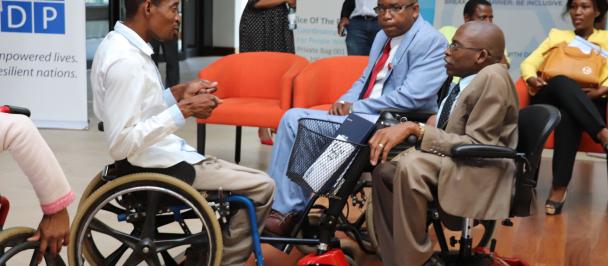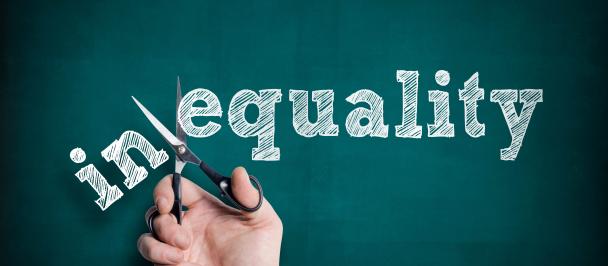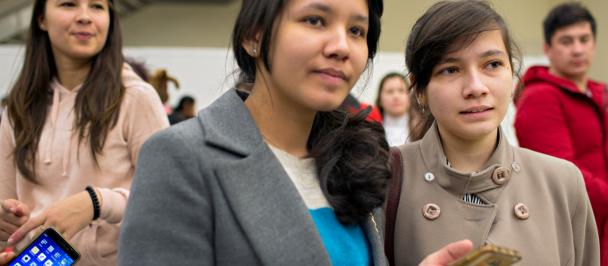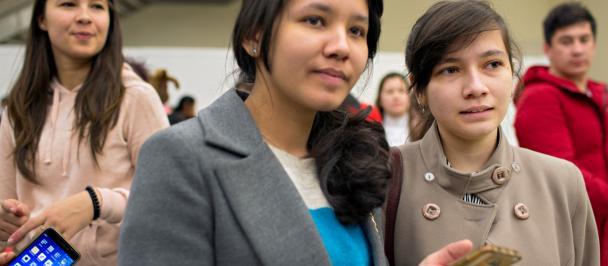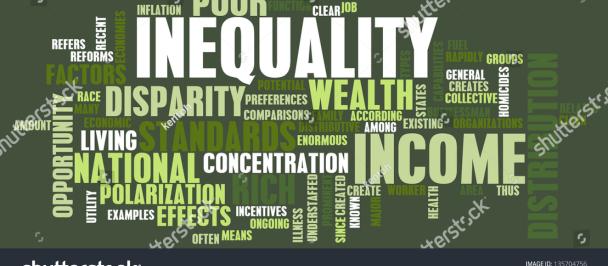Statement Delivered by Abdoulaye Mar Dieye at the UNGA High Level Thematic Debate on the Issue of Inclusive Development and Inequalities Within and Among Countries
Addressing Inequalities Towards Inclusive Development
May 14, 2019
Madame President, Excellencies, Ladies and Gentlemen,
It is my pleasure to participate in this timely discussion on progress in achieving equality towards inclusive development.
We could have called 2019 the World Inequality Year.
We have just had, in February, a thorough discussion on the question, during the 57th Commission on Social Development -CSD; then today, at this General Assembly- GA high level thematic debate; then in July during the High-level Political Forum; it will again be the center of the 45th G7 Summit, in Biarritz, France, in August; and later in September during the SDG Summit. And it is the topic of UNDP’s Human Development Report, which will be launched during the 4th quarter of this year.
The latest report of the UN Secretary General on the progress of the Sustainable Development Goals (SDGs) is a call for renewed global commitment and accelerated action. It does recognize, that progress is being made, overall, but at a very slow tempo.
It notes that inequalities within and among nations continues to be a significant concern despite progress and efforts in narrowing disparities of opportunity, income and power. Income inequality continues to rise in many parts of the world, even if the bottom 40% of the population in many countries have experienced growth rates.
The science of inequality is yet very clear. That disease of our modern civilization, as President Jimmy Carter called it, is principally rooted in injustice. And it does affect all parts of society’s wellbeing; including mental health and the health of the biosphere. Although it disproportionately affects the poor; we have seen now the middle class under siege and shrinking in many countries. And this is a worrisome development; as societies move to the extremes, it is hard to find a common ground, posing a serious challenge to peace, security and the very social contract of nations. Inequality is then an existential threat.
Our solutions, in general, have tended to be very economicist and very often fiscal policy – centric; and not transformative enough; but rather tweaking at the margin. Yet inequalities are intrinsically structural.
The SDGs offer a viable policy platform to address inequalities, structurally.
First, with its embedded and most powerful doctrine of Leave No One Being- LNOB, we have in the 2030 Agenda, a most effective framework for action. We will not be able to bend the curve of inequalities, unless we deliberately invest significant portion of our resources, including from national budgets, on people that have been marginalized such as women, youth, indigenous groups, persons with disability, older persons; and seeing them not just as beneficiaries, but also as agents of change in their communities. Hence UNDP’s policy of ensuring that all its programs have LNOB markers. Some countries are along that path. Bhutan, in its 12th five-year plan, has identified 14 vulnerable groups through a vulnerable Base Line Assessment, and which will be specifically targeted through dedicated policies and special programs.
Second, most experts, across different fields and organizations, recognize the centrality and even the primacy of SDG 10 in the landscape of the 2030 Agenda. Because SDG 10 epitomizes the syncretism of all the goals; it then requires integrated policies to deal with it. Only solutions that are integrated in nature will have a gravity pull on inequalities. For instance, investing in nature-based solutions, such as FAO and other UN partners’ support to agroecology has deep impact on multiple SDGs (including those related to food, health, climate, biodiversity, women and youth) and hence culminating in reducing inequalities in, for example, countries such as India, Senegal, Mexico. We must search for and invest in those solutions.
Third, and as inequalities have most often a territorial dimension (spatial exclusion), optimal policies to reduce inequalities must have the ability to go sub-national and local. And as the place of highest inequalities, and the site of both economic opportunity and disparity, cities have a critical role to play in tackling inequality. They should be encouraged to form a Global Alliance Against Inequality. That would be an investment with a high return in reducing inequalities.
Fourth, a fundamental deterrent in our fight against inequalities is the very structure of our production patterns, with the share of labor progressively diminishing compared to the share of capital; and with the advent of the 4th industrial revolution and the surge of Artificial Intelligence, this trend may be further accentuated hence deepening inequalities. A global governance is needed to help mitigate such a potential risk. The UN would be the natural locus for such an inclusive governance.
Ladies and Gentlemen,
As our session today will show, we are not short of ideas to tackle inequality. We need only strengthen our resolve with a greater sense of ambition! May the 74th session of the UN General Assembly be that historic moment !
I thank you.

 Locations
Locations
